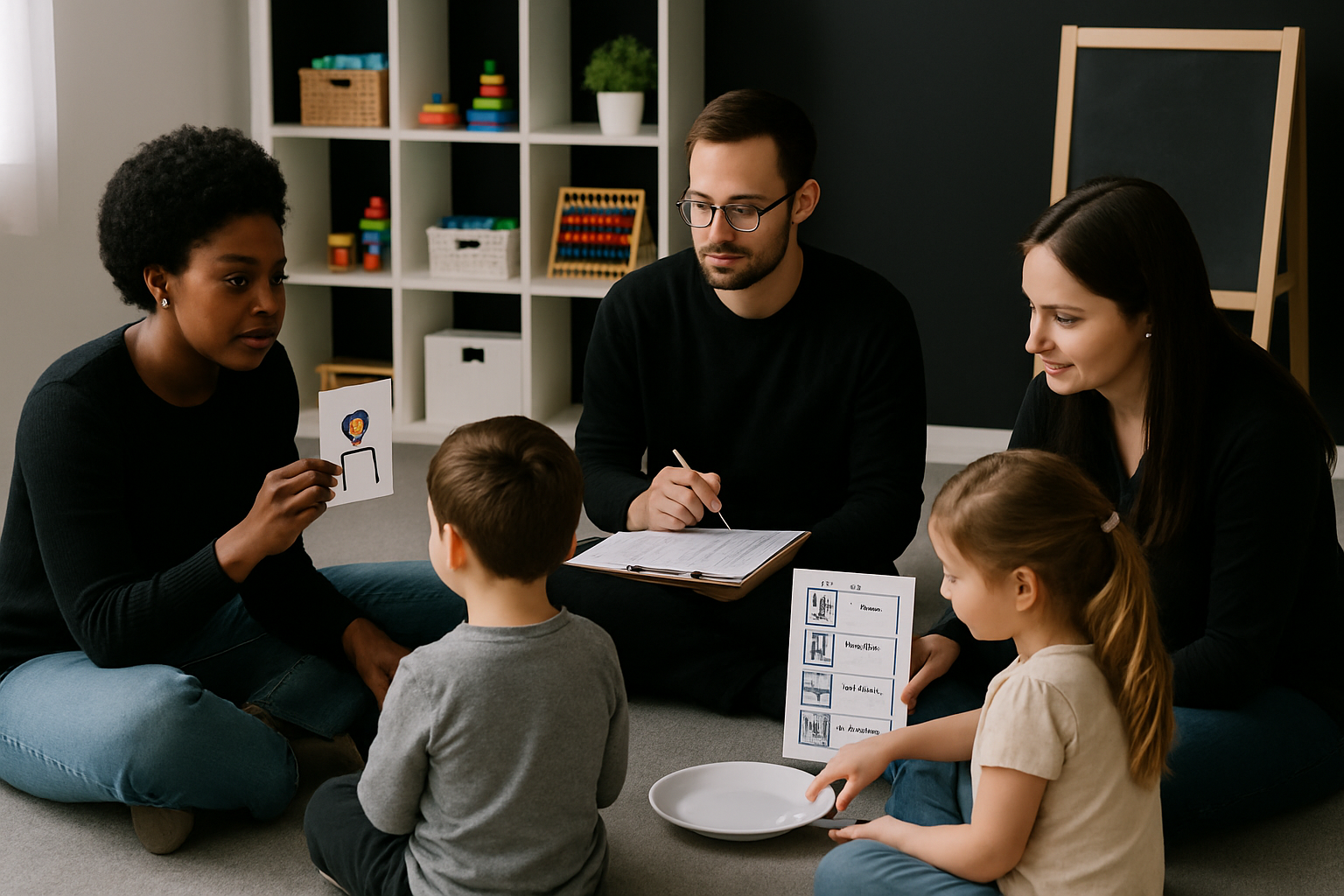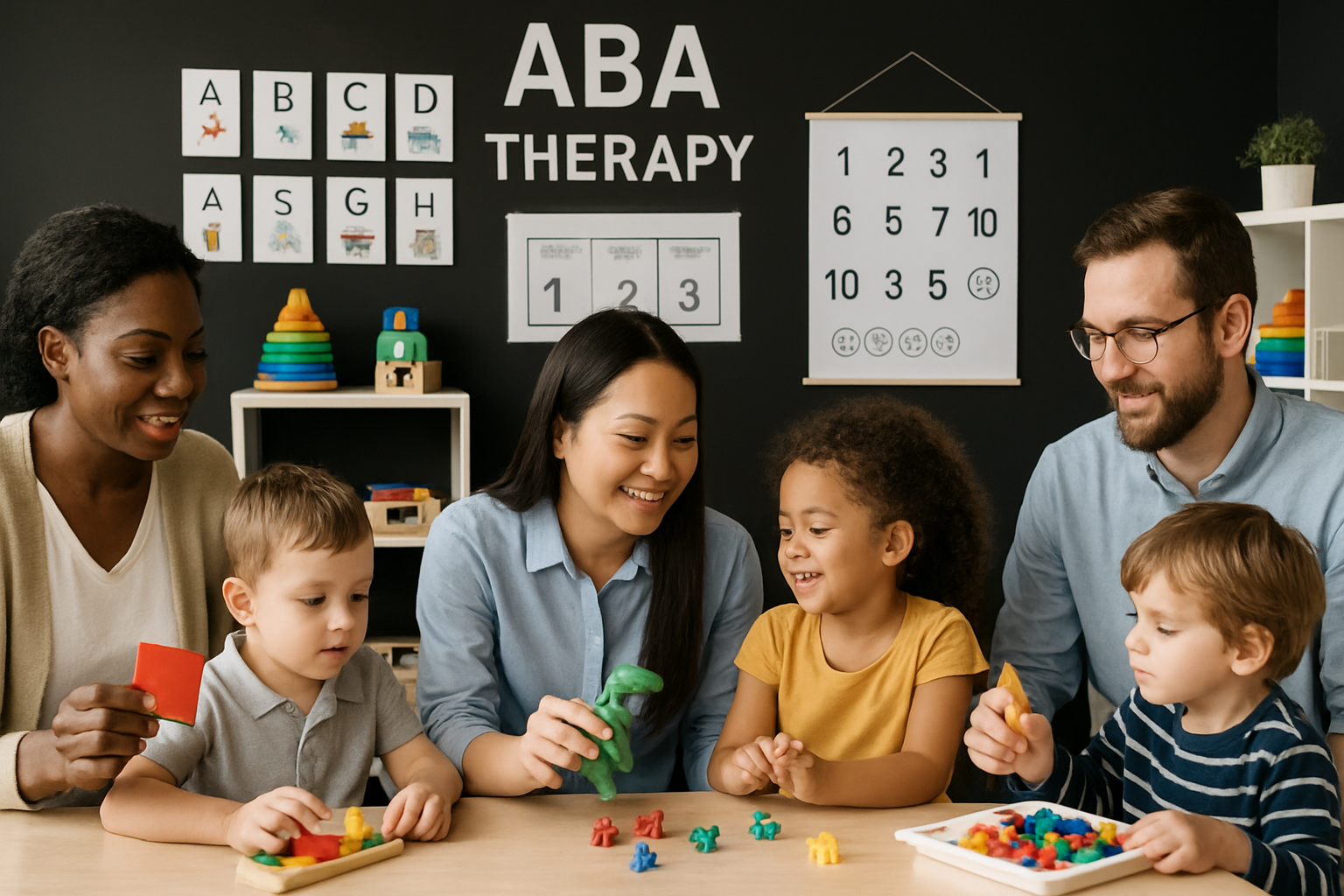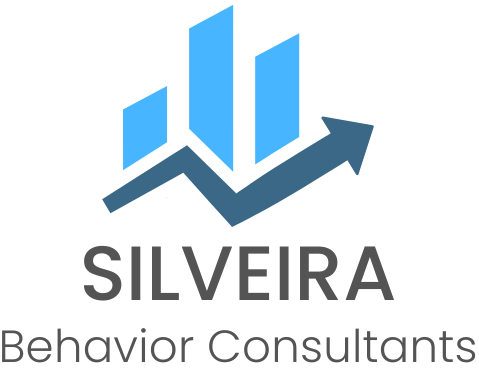Unlock the power to create lasting change in 2025 by mastering skill acquisition in ABA. Whether you are a parent, educator, or new therapist, learning how to teach essential skills through Applied Behavior Analysis opens doors for individuals with autism and developmental disabilities. This beginner‑friendly guide breaks down skill acquisition ABA step by step, turning complex concepts into practical strategies. You’ll explore ABA fundamentals, how to assess and set goals, proven teaching methods, ways to track progress, and solutions for common challenges. Ready to see how evidence‑based approaches can transform lives? Dive in for actionable tips and insights that help you build meaningful, sustainable progress—starting today.
Understanding Skill Acquisition in ABA
Skill acquisition in ABA is a cornerstone for helping individuals with autism and developmental disabilities thrive. It refers to the systematic process of teaching new skills that improve independence and overall quality of life. Unlike behavior reduction, which focuses on decreasing challenging behaviors, skill acquisition ABA emphasizes building positive abilities.
Core Areas of Skill Development
Key domains include communication, social interaction, and daily living skills. Concepts such as “target skills” and “mastery criteria” define what is taught and how progress is measured. For example, teaching a child to request help or complete a daily routine can be identified as a skill acquisition goal within ABA therapy.

WHAT IS SKILL ACQUISITION?
Skill acquisition ABA refers to teaching meaningful new skills using structured, evidence-based methods. It is vital for individuals with autism and developmental disabilities, as it paves the way for greater independence. This process differs from simply reducing unwanted behaviors; instead, it focuses on adding and strengthening abilities.
Examples of skill acquisition ABA include learning to communicate needs, engaging in play, and mastering daily living routines. Key terms to know are “target skills” (what is being taught) and “mastery criteria” (how you know when a skill is learned). By targeting specific areas, skill acquisition ABA brings measurable growth.
The Role of ABA in Skill Development
Applied Behavior Analysis (ABA) is the scientific foundation behind skill acquisition ABA. ABA uses principles such as reinforcement, prompting, and shaping to break down and teach new skills. Its evidence-based approach is widely recommended by organizations like the CDC and Autism Speaks.
Studies consistently show that ABA leads to significant improvements in communication, social, and academic domains. For those seeking in-depth research, the Journal of Applied Behavior Analysis offers a wealth of peer-reviewed evidence supporting skill acquisition ABA. Real-world success stories highlight how structured ABA can spark lasting skill development.
Types of Skills Targeted
Skill acquisition ABA covers a broad range of life-enhancing skills. These include:
- Communication: Verbal and nonverbal skills, such as requesting, labeling, or using gestures.
- Social interaction: Sharing, turn-taking, and group play.
- Self-care: Dressing, toileting, and feeding.
- Academic and cognitive: Identifying letters, solving puzzles, or following instructions.
- Adaptive behaviors: Skills for daily routines and flexibility in new situations.
By addressing these diverse areas, skill acquisition ABA helps learners build a strong foundation for independence and participation in daily life.
Benefits of Early and Structured Skill Acquisition
Starting skill acquisition ABA early yields the best outcomes. Research, such as the famous Lovaas study, shows that early intervention can dramatically improve long-term success. Structured teaching ensures consistency, making it more likely that new skills will stick.
Families benefit, too, as improved skills reduce stress and foster better relationships. Studies report higher school readiness and greater independence in children who receive early, structured skill acquisition ABA. The impact reaches beyond the individual, supporting the entire family system.
Common Myths and Misconceptions
Some believe skill acquisition ABA is rigid or one-size-fits-all, but this isn’t true. In reality, ABA programs are tailored to each learner’s unique needs, interests, and strengths. Person-centered planning and flexibility are core principles.
Concerns about lack of individuality are addressed by involving families and adapting teaching methods. Evidence and real-life examples show that skill acquisition ABA is effective when individualized. Dispelling myths helps families feel confident in choosing ABA for their loved ones.

STEP 1: CONDUCTING SKILL ASSESSMENTS
The first step in skill acquisition aba is to gather a clear understanding of a learner’s strengths and needs. Assessments like VB-MAPP, ABLLS-R, and AFLS are commonly used. Direct observation is essential. Therapists watch the learner in different settings and situations. Interviews with families and caregivers offer valuable insights too.
For example, when assessing communication skills, you might observe how a child asks for help or responds to greetings. This baseline data is crucial for tracking growth. Involving families ensures that assessments reflect real-life situations. The more accurate the initial data, the more effective the skill acquisition aba journey will be.
STEP 2: SETTING CLEAR AND MEASURABLE GOALS
Once assessment is complete, the next step in skill acquisition aba is to set goals that are both clear and measurable. Goals should follow the SMART framework: Specific, Measurable, Achievable, Relevant, and Time-bound. For example, instead of “improve communication,” a SMART goal would be, “Will request help using words in 80% of opportunities over two weeks.”
Goals must be individualized based on assessment results. Observable and measurable objectives make it easier to track progress and celebrate success. Collaborating with families helps ensure goals are meaningful and reflect the learner’s daily life. This alignment is key for sustainable progress in skill acquisition aba.
STEP 3: SELECTING APPROPRIATE TEACHING METHODS
Selecting the right teaching methods is a cornerstone of skill acquisition aba. Common strategies include:
- Discrete Trial Training (DTT): Highly structured, breaks tasks into small steps.
- Natural Environment Teaching (NET): Uses everyday routines and settings.
- Task Analysis and Chaining: Breaks complex skills into manageable parts.
- Prompting and Fading: Guides learners and then gradually removes help.
- Reinforcement: Motivates and rewards progress.
Matching the teaching method to the learner’s needs is vital. For instance, DTT might be ideal for early learners, while NET fits those ready for more natural interactions.
Research backs the effectiveness of each method. Using a mix ensures that skill acquisition aba is both flexible and evidence-based.
STEP 4: CREATING AND IMPLEMENTING SKILL ACQUISITION PLANS
A solid skill acquisition aba plan includes clear instructions, materials, and data collection tools. It also details who is responsible for each part of the process. Multidisciplinary teams—therapists, educators, and families—should collaborate in plan development. Consistent scheduling and implementation are crucial for progress. Regular plan reviews help ensure that strategies stay effective. For example, a toileting plan might include step-by-step instructions, reinforcement strategies, and data sheets to track daily progress. Adjustments are made as new data comes in, keeping skill acquisition aba dynamic and responsive to the learner’s growth.
STEP 5: DATA COLLECTION AND PROGRESS MONITORING
Objective data collection is key to tracking success in skill acquisition aba. Common data types include:
- Frequency (how often a skill occurs)
- Duration (how long a skill lasts)
- Accuracy (how correctly a skill is performed)
Tools range from simple paper data sheets to advanced apps and graphs. Using data-driven methods helps make informed decisions about program changes. For more on data-based instruction, see the Precision Teaching Overview.
Consistent monitoring allows for quick adjustments. If a learner isn’t progressing, you can modify the approach. This ensures skill acquisition aba remains effective and tailored.
STEP 6: GENERALIZATION AND MAINTENANCE
The final step in skill acquisition aba is making sure skills transfer across people, settings, and materials. This process is known as generalization. Strategies include practicing with multiple teachers, in various environments, and using different objects. For example, a child who learns to greet at home should also practice greetings at school.
Maintenance checks and booster sessions help keep skills fresh. Without these steps, learned behaviors can fade.
By focusing on generalization and maintenance, skill acquisition aba leads to real-world, lasting change for learners and their families.
Evidence-Based Teaching Strategies in ABA
Unlocking effective skill acquisition aba starts with proven teaching strategies.
Evidence-based techniques are the backbone of progress in ABA programs. These strategies ensure that learners develop new skills efficiently and gain confidence in their abilities.

DISCRETE TRIAL TRAINING (DTT)
Discrete Trial Training is a structured teaching method central to skill acquisition ABA. In DTT, each lesson is broken down into simple steps: a cue, the learner’s response, and a consequence (like praise or a reward).
This method is especially effective for teaching early academic and communication skills. For example, teaching colors or numbers involves repeated practice, clear instructions, and immediate feedback.
- Pros: Predictable structure, Fast skill-building
- Cons: May feel repetitive, Less natural context
Research consistently shows DTT’s effectiveness in early intervention, making it a reliable choice for many programs.
Natural Environment Teaching (NET)
Natural Environment Teaching brings skill acquisition ABA into real-life settings. Unlike DTT, NET uses everyday routines and interests to teach skills, promoting more spontaneous and functional learning.
Therapists embed teaching moments during play, meals, or family activities. For example, requesting a snack during snack time helps generalize the skill beyond therapy sessions.
- Benefits of NET include:
- Increased motivation
- Enhanced generalization
- Improved social communication
NET is especially useful for building social and communication skills that learners will use outside of structured sessions.
Task Analysis and Chaining
Task analysis breaks down complex tasks into smaller, manageable steps, a vital part of skill acquisition ABA. Each step is taught and linked together using chaining procedures: forward, backward, or total task chaining.
For example, teaching hand washing involves steps like turning on the faucet, applying soap, and rinsing hands. The learner masters each step in sequence, building toward the complete skill.
- Types of chaining:
- Forward chaining: Start from the first step
- Backward chaining: Start from the last step
- Total task chaining: Practice all steps together
This approach ensures each part of a skill is learned thoroughly and systematically.
Prompting and Fading
Prompting is providing cues to guide correct responses during skill acquisition ABA. Prompts can be physical, verbal, visual, or gestural, helping learners perform new tasks successfully.
As the learner’s confidence grows, prompts are gradually faded. This process reduces dependence and encourages independence. For example, a therapist may move from hand-over-hand assistance to just pointing or nodding when teaching tooth brushing.
- Tips to prevent prompt dependency:
- Use the least intrusive prompt needed
- Fade prompts as soon as possible
- Reinforce independent responses
Prompting and fading are essential for promoting lasting skill mastery.
Reinforcement Systems
Reinforcement is at the heart of skill acquisition ABA, motivating learners to repeat desired behaviors. Positive reinforcement can include tokens, praise, or access to preferred items. Schedules of reinforcement—fixed or variable—help maintain progress.
It’s important to avoid over-reliance on tangible rewards. Instead, blend social praise and natural outcomes. For example, a token board for task completion can transition to verbal praise over time.
To learn more about supportive reinforcement, see Positive Behavior Support Techniques, which expand on these concepts in ABA. Effective reinforcement systems ensure skills are maintained and generalized across settings.
OVERCOMING COMMON CHALLENGES IN SKILL ACQUISITION
Overcoming obstacles in skill acquisition ABA is essential for lasting, meaningful progress. While every learner is unique, certain hurdles are common in the journey. By anticipating these challenges, beginners can apply solutions that keep programs on track and foster genuine growth.
ADDRESSING BEHAVIORAL BARRIERS
Behavioral barriers such as
avoidance,
tantrums, or
inattention can disrupt skill acquisition ABA. A
Functional Behavior Assessment (FBA) helps identify the root causes of these behaviors. Through FBA, teams uncover triggers and patterns, allowing for targeted strategies.
Common solutions include:
- Modifying antecedents (e.g., changing task demands)
- Using differential reinforcement to encourage positive behaviors
- Teaching replacement skills
Innovative approaches, like those described in the Gamified ABA Therapy Framework Study, show how gamification can boost engagement and focus for learners. By making sessions more enjoyable, therapists can reduce barriers and maintain motivation.
Individualizing Instruction for Diverse Learners
Every learner brings unique strengths, needs, and cultural backgrounds to the table. Effective skill acquisition ABA tailors instruction to each person. Material adaptations, such as visual schedules for nonverbal learners or hands-on activities for kinesthetic learners, make a big difference.
Collaboration is key:
- Work with speech, occupational, and other therapists
- Incorporate personal interests to boost motivation
- Adjust methods for age, ability, and culture
When instruction fits the learner, progress is more likely and setbacks are fewer.
Ensuring Family and Caregiver Involvement
Family involvement is a cornerstone of successful skill acquisition ABA. Caregivers who practice skills at home help generalize learning beyond the clinic.
Training families in techniques like prompting, reinforcement, and data collection ensures consistency and boosts outcomes. Research shows:
- Parent-led practice improves skill generalization
- Consistent routines across settings reduce confusion
- Open communication keeps everyone aligned
By partnering with families, ABA teams build a strong support network for the learner.
Monitoring Progress and Adjusting Plans
Ongoing monitoring is vital in skill acquisition ABA. Regular reviews of data—such as accuracy, frequency, or duration—highlight what’s working and what’s not. Meetings with the team help spot plateaus or regression early.
Key actions include:
- Analyzing data trends using graphs or tracking apps
- Modifying strategies when progress stalls
- Adjusting reinforcement to maintain motivation
Staying responsive means every learner receives the right support at the right time.
Avoiding Common Pitfalls
Certain pitfalls can slow or reverse gains in skill acquisition ABA. Over-prompting may create dependency, while inconsistent implementation can confuse learners. Neglecting generalization or not honoring learner preferences reduces effectiveness.
To avoid these issues:
- Fade prompts gradually to promote independence
- Train all staff and caregivers for consistency
- Plan for generalization from the start
- Listen to learner feedback and adapt
Being proactive about pitfalls ensures smoother progress and more robust outcomes for everyone.
TOOLS AND RESOURCES FOR BEGINNERS IN SKILL ACQUISITION ABA
Starting out with skill acquisition ABA can feel overwhelming, but the right tools and resources make a world of difference. Whether you’re a parent, educator, or new ABA professional, having reliable supports ensures you build confidence and see progress. Let’s break down the essentials every beginner should know.
ESSENTIAL ASSESSMENT AND CURRICULUM TOOLS
When beginning with skill acquisition ABA, selecting the right assessment and curriculum tools is crucial. The most popular options include the VB-MAPP, ABLLS-R, and AFLS. Each tool assesses different skill domains, such as communication, daily living, and academic abilities.
| Tool | Focus Areas | Best For |
| VB-MAPP | Language, social, barriers | Early learners |
| ABLLS-R | Academics, self-help | Broad skill range |
| AFLS | Daily living, independence | Older children, adults |
DATA COLLECTION AND TRACKING RESOURCES
Accurate data collection is at the heart of skill acquisition ABA. Beginners can choose between traditional paper data sheets or digital solutions. Many professionals now use apps such as Catalyst and CentralReach for real-time tracking and easy graphing.
Popular options include:
- Paper data sheets: Simple, customizable, and low-cost
- Catalyst: Mobile app for on-the-go data entry
- CentralReach: Comprehensive platform for data analysis
Sample templates for data tracking are widely available online, helping you maintain consistency and make informed decisions in your skill acquisition ABA journey.
Ongoing learning is vital for success in skill acquisition ABA. Beginners should explore online courses, webinars, and certification programs such as RBT (Registered Behavior Technician) and BCBA (Board Certified Behavior Analyst).
Recommended resources:
- Online courses: Flexible, self-paced options
- Books and journals: Stay updated on the latest research
- Forums and communities: Connect with peers for advice
Investing in professional development not only builds your knowledge of skill acquisition ABA but also connects you with a community of passionate practitioners.
COLLABORATION WITH ABA PROFESSIONALS
Effective skill acquisition ABA depends on teamwork. Board Certified Behavior Analysts (BCBAs) play a key role in assessment, planning, and ongoing supervision. For beginners, seeking mentorship and supervision ensures safe and effective practice.
How to collaborate:
- Find qualified providers: Use reputable directories or local networks
- Participate in regular supervision: Gain feedback and refine techniques
- Engage multidisciplinary teams: Work with speech, OT, and other specialists
Collaboration strengthens your skill acquisition ABA efforts and provides valuable support as you learn.
STAYING UPDATED WITH ABA BEST PRACTICES
The field of skill acquisition ABA evolves rapidly. Staying current with research and best practices is essential for ongoing success. Attend conferences, join organizations like ABAI, and subscribe to newsletters for the latest trends.
Key ways to stay updated:
- Conferences: Network and learn from experts
- Professional organizations: Access resources and training
- Emerging research: Read peer-reviewed journals
By dedicating time to professional growth, you ensure your skill acquisition ABA practices remain effective and evidence-based.
Now that you’ve got a clear picture of how skill acquisition in ABA can empower growth and independence—whether it’s building communication, social skills, or essential daily routines—you might be wondering how to take the next step for yourself or your loved one. At Silveira Behavior Consultants, we’re here to support you with personalized, evidence-based ABA services tailored to your unique journey. If you’re ready to explore how our team can help you put these strategies into action and make meaningful progress, I invite you to Inquire About Services. Let’s start this journey together!





